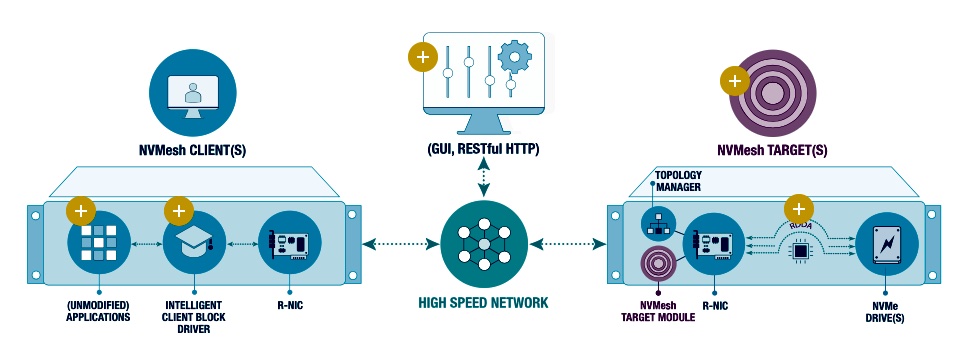Excelero is broadening its NVMesh offering by adding erasure coding, performance analytics and, most importantly, support for NVMe over traditional TCP/IP and Fibre Channel.
This could be considered to be a move downmarket for Excelero, which has focused to date on the much faster NVMe-oF over ROCE. However, this initiative makes its technology more accessible and affordable.
For example, shared external array storage using ether TCP/IP or Fibre Channel has a migration path to NVMe-oF that could be non-disruptive. Effectively, this includes the entire installed SAN (Storage Area Network) base.
Also, using existing NICs and adapters is likely cheaper than buying new data centre-class Ethernet gear.
IBM and NetApp have announced support for NVMe-FC, and SolarFlare and Pavilion Data have worked with NVMe over TCP/IP.
NVMesh
Excelero introduced NVMesh to the world in March 2017.

NVMesh offers NVMe-over-Fabric, using a shared external flash array or a hyperconverged setup that aggregates the component server’s direct-attached flash storage. The data access protocol is NVMe-oF using RDMA over data centre-class Ethernet (ROCE). This adds about 5µs of latency to the 100µs or so needed to access a direct-attached PCIe SSD.

TCP and FC support in NVMesh v2.0 adds some additional latency to data access, according to Excelero. If we imagine a baseline drive latency of about 100µs, users who deploy TCP-IP or Fibre Channel connectivity could get latency that goes out to 180-200µs.
NVMe-oF the People
This is still significantly faster than external flash array access, according to Yaniv Romen, Excelero’s CTO. He said external flash arrays operate at sub-millisecond latency, and NVMe over TCP or FC is faster still. This is similar to the performance reported by Pavilion Data, which found average TCP (183µs) latency was 71 per cent slower than RoCE (107µs).
Excelero has also added erasure coding in its MeshProtect facility which can, depending upon the implementation, provide 90 per cent drive space efficiency compared to the 50 per cent of RAID mirroring.
A MeshInspect function in v2 NVMesh adds performance monitoring of volume or client-level capacity and performance, and this can be tracked via a GUI.
Excelero’s NVMesh v2.0 is currently in beta test and will be available in early 2019. There’s more information here.








